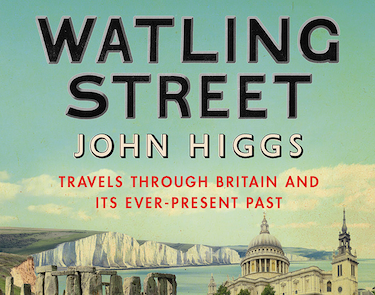Post
BOOK REVIEW | Watling Street
27 Apr 2020
Watling Street: Travels Through Britain and Its Ever-Present Past
By John Higgs (Weidenfeld & Nicolson £18.99)
Reviewed by Jessica Cargill-Thompson
Subtitled 'travels through Britain and its ever-present past', Higgs's book follows one of the country's most ancient and longest roads (444 km from Dover to Anglesey) in an attempt to tap into the psyche of Albion.
In London, Watling Street manifests itself as the Old Kent Road and Edgware Road, two unprepossessing thoroughfares that have nevertheless been fundamental to the story of the capital, carrying kings, pilgrims and drovers up from Kent, or accommodating filmmakers, codebreakers and landscape gardeners in Hertfordshire and beyond. In its guise as the A2 and the A5, the road carries commuters, goods and travellers in and out of the city, imprisoning them in its turgid metallic flow, unconcerned with the history beneath their wheels. It's a wilful downplaying of importance that the author describes as 'very British'.
En route from coast to coast the reader travels the road in the company of its ghosts: the Romans determined to plough a straight line irrespective of the undulations of the landscape; Charles II returning from French exile to kickstart London's cultural Restoration; Dickens and his characters; druids; highwaymen; and even, at one point, James Bond. The claim that 'there is no road anywhere in the world that has produced so many stories' is a bold one, but there are nevertheless tales a plenty – in the case of the M6 toll road, literally, as we learn that below the tarmac are 2.5 million pulped Mills & Boons. Also along for the ride are the literary spirits of Iain Sinclair, WG Sebald and Alan Moore as the narrative turns off down psychogeographical slip roads to join a network of histories and mythologies.
The least fulfilling part of the journey is in fact where we pass through central London and the route splits into pre- and post-Roman after Southwark, reconnecting at Marble Arch (the small section that is still actually called Watling Street can be found near Cannon Street). En route the pace slows with an unnecessarily long digression about a poet called John Crow and the Crossbones burial ground at Borough — a fascinating story, but one whose intricacies might be better served in a separate work. Yet there are also some deliciously gruesome descriptions of the hangings at Tyburn, made palatable only by the cushion of time.
However situating London not at the centre of the road network, as does the clockwise numbering of A-roads radiating from the capital, but as a node on a continuum, allows a reconsideration of the city. We see it not as a place fixed in time and space, but inextricably linked down and up through history and out along its linear routes, connecting to far-flung people, places and events.
The shadow of Brexit inevitably stretches out across the pages as the author searches for 'a new national story'. 'We are seeking a better sense of national identity,' writes Higgs, 'one which bubbles naturally out of the land.' Going on to argue, having weighed up the land's history: 'If someone is on this island, they are part of it.' It is an intentional irony that the journey begins at the very point that links this isle to its continent; and finishes in Wales, which so recently voted to uncouple it.
